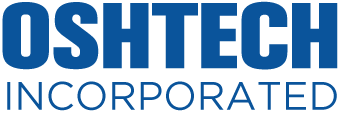Protecting workers against back strain, RSI, heat stress, hand-arm vibration, shoulder & neck pain, etc. requires detailed knowledge of causitive factors related to the job. Sometimes, very light work can be harmful, if repetitive. Job rotation patterns can aggravate risks. Back injuries can happen even when lifting entails light work. We conduct workplace measurement studies & ergonomic investigations to assess injury risks, reduce physiologic strain, & develop prevention strategies. We use a wide range of computer modeling software, workplace measurement equipment, instruments & skills to achieve this purpose. Comfort, safety, efficiency are other goals.
These issues transcend all types of work. It’s not just manufacturing, assembly, construction & traditional work using heavy equipment. Workers in offices, healthcare facilities, commercial & retail facilities, food preparation, etc alike are impacted. We act as a resource to HR departments, claims management, safety committees, production engineering, product designers, etc. Jobs are assessed for physical demands, compliance with biological exposure indices & normative thresholds, job suitability, compatibility with return to work, injury risk potential, etc. Solutions are identifed through improved design, tool use, re-defined work methods & training. The types of ergonomics consulting service most often requested include:
- Physical demands profiling to identify & describe job-specific physical requirements
- Implentation of programs to prevent musculoskeletal disorders (MSD)
- Injury risk evaluations
- Heat stress awareness and avoidance
- Workload categorization for metabolic requirements
- Examination of return to work issues, compatibility & suitability
If you need assistance with any of theses matters or other ergonomics issues please contact ergonomics@oshtechinc.com at OSHTECH Ergonomics Group Inc. to discuss how OSHTECH can help address your ergonomics needs.
Physical Demands Profile
You may know them as “PDA’s” or “Physical Demands Analysis” but we prefer to call them “PDP’s” or Physical Demands Profiles, a preliminary form of job analyis that describes the physical requirements of work. PDPs usually precede injury risk analysis & are an integral part of Return To Work (RTW) programs. The PDP should provide clear information about physical demands, allowing decisions to be made vis-a-vis medical restrictions. For health care practitioners objective, clear job information can lead to informed, professional opinions benefitting their patients & the employer and expediting return to work. Well-constructed physical demands profiles present objective information about essential duties & physical demands, allow first-time readers to quickly understand key aspects of job demands, ease the task of job-matching to ensure employees’ functional abilities meet with the physical demands of the job & can be used for other purposes including training to prevent injury, achieve production efficiencies, & improve working conditions.
Heat Stress Programs
Return to Work Issues, Compatibility and Suitability
Suitability
The concept of job “suitability” or “suitable employment” means that physical demands of a job must be within the physical capabilities or “functional abilities” of the employee, thus permitting for work in a safe, healthy, & efficient manner. In this context, a systematic ergonomics review is performed comparing the physical demands of work vs the physical capabilities of the worker. Accommodations to improve the ergonomics of the job and to facilitate successful return to work may be necessary to ensure suitability & reduced potential for re-injury.
Compatibility
Demonstration of a cause-effect relationship between a reported work injury vs the job demands is a key component of settling a claim. The insurer, ie. the compensation board (WSIB), examines whether the injury report is consistent meaning “compatible” with the job demands. Our ergonomist will conduct an independent review of the physical demands of the work, identify ergonomic risk factors associated with the job & correlate these findings to injury mechanisms to determine the likelihood of a work-related cause-effect relationship.
For assistance with these issues please contact us.


